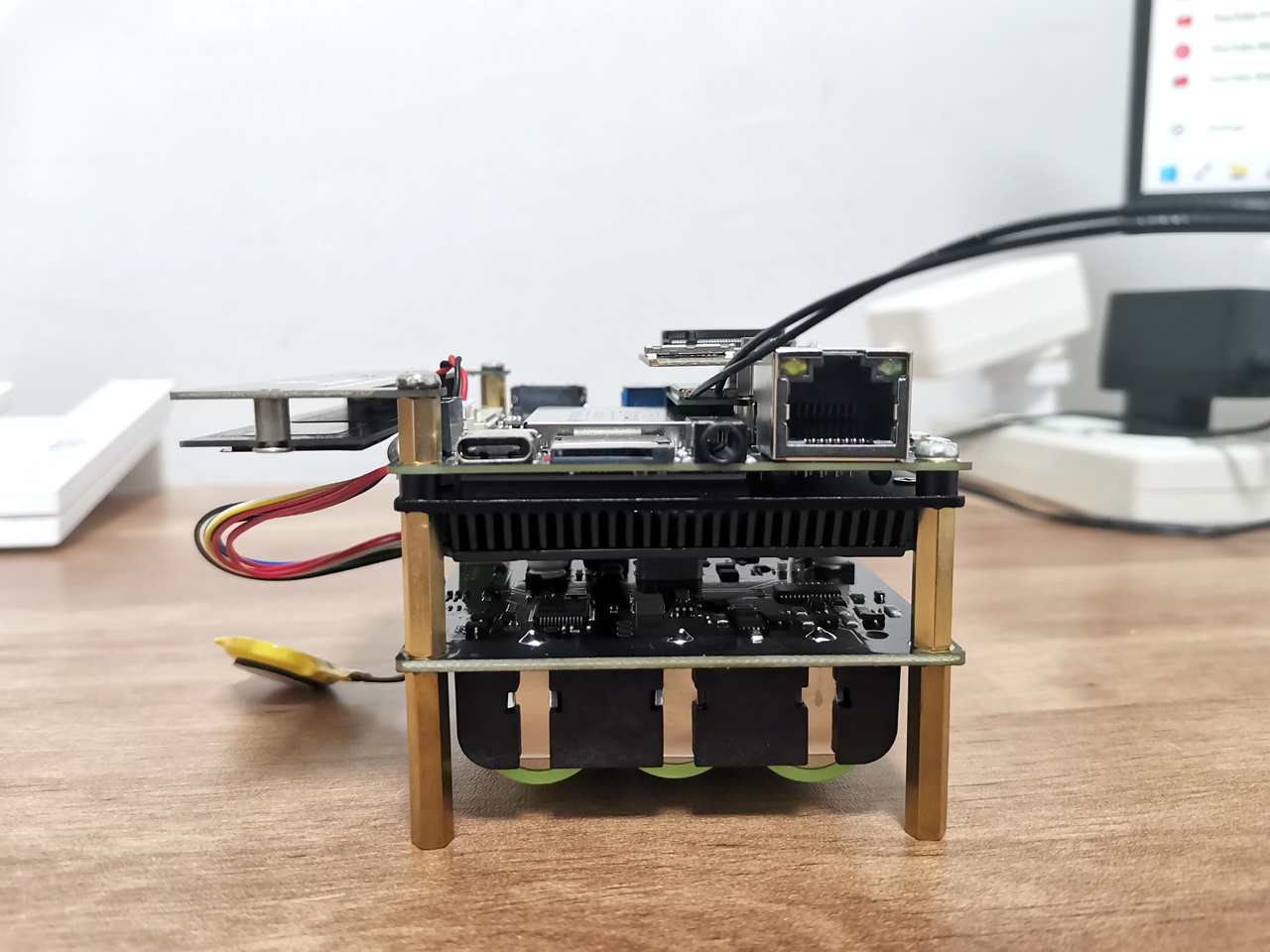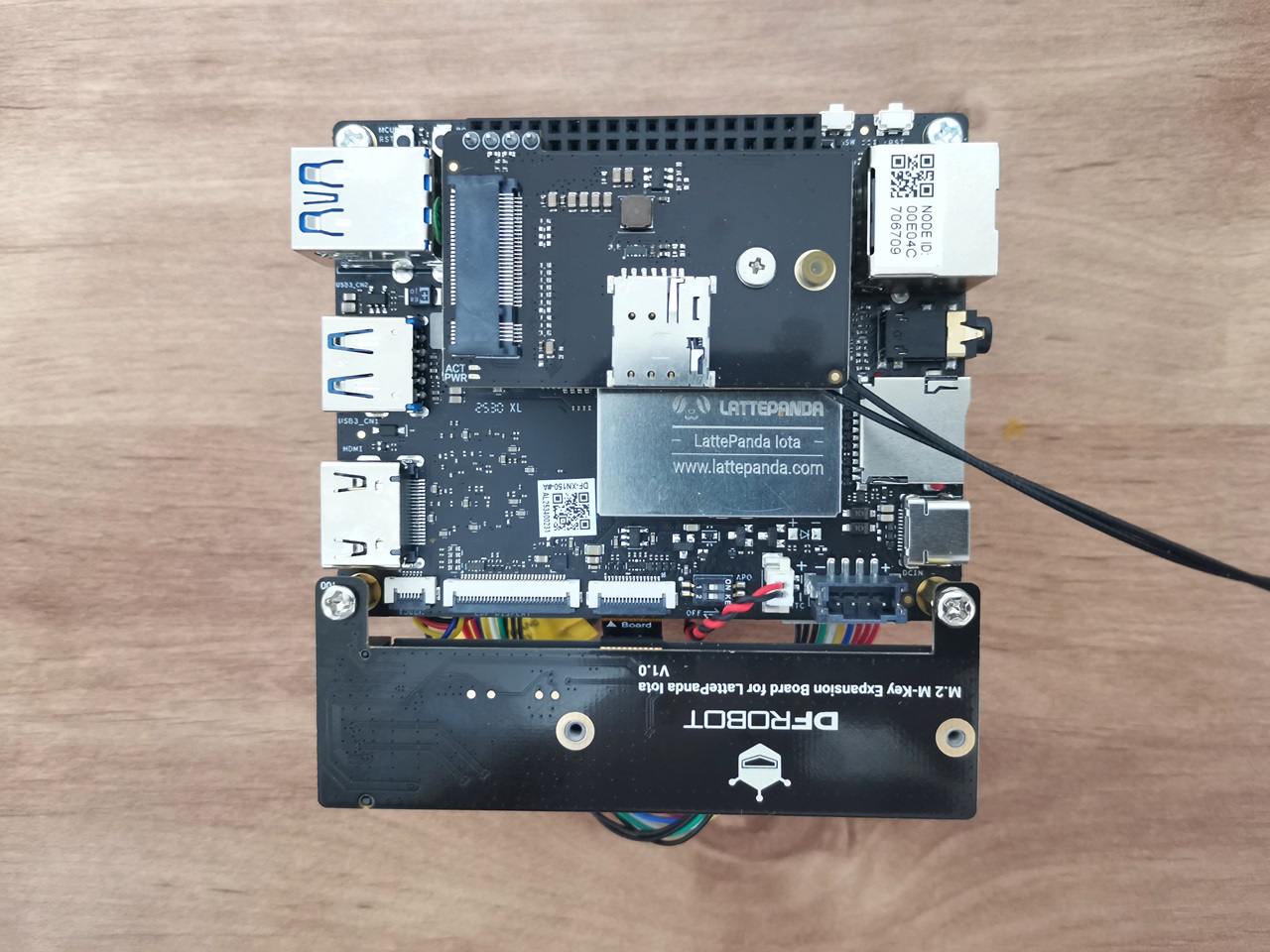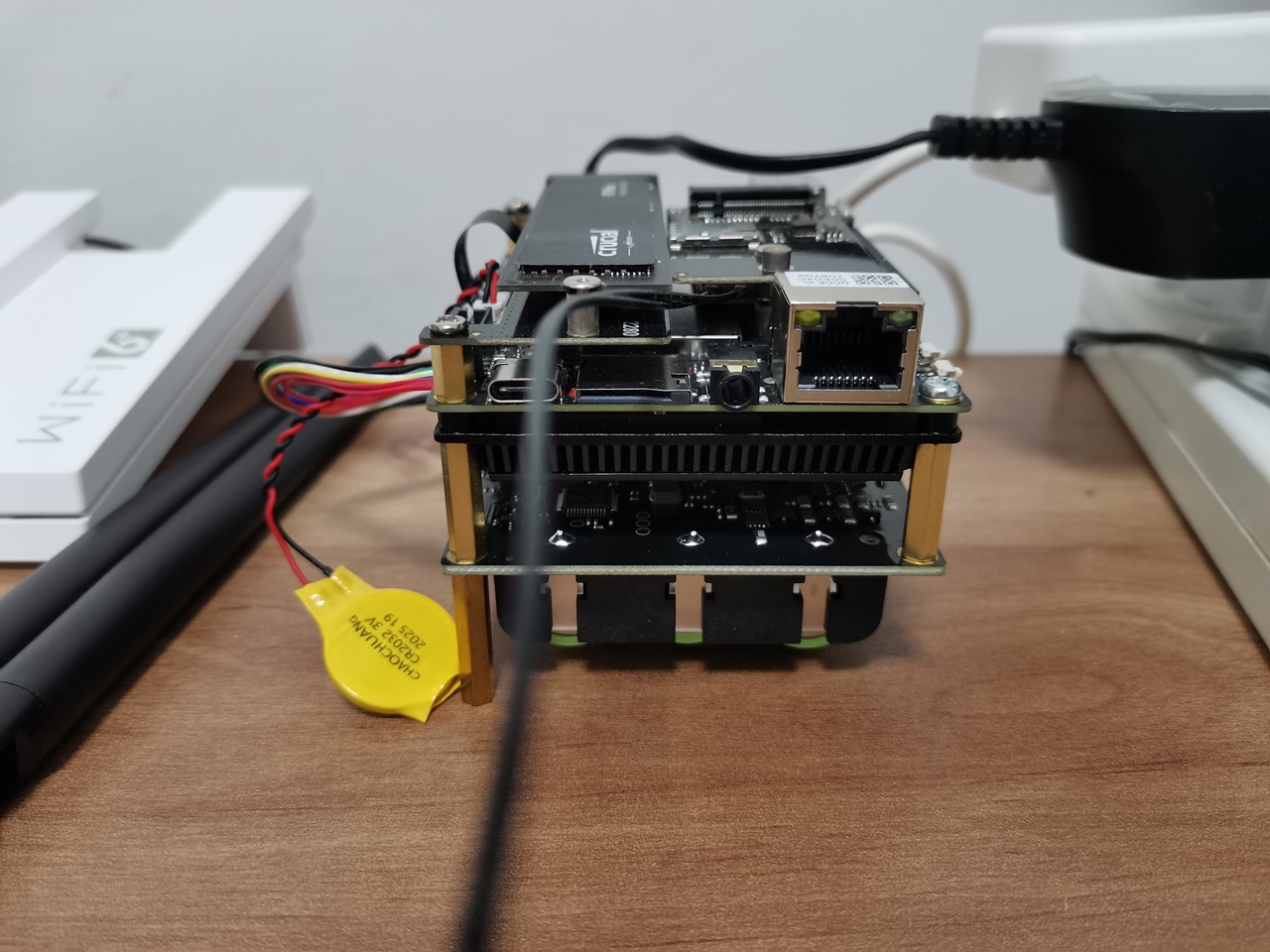Table of Contents
An improved rack configuration
There’s also the option to assemble the NVMe expansion card outward instead of inward. This gives extra room to access the eDP and touch connectors and makes it much easier to insert a micro-SIM card into the 4G/LTE expansion card. Additionally, you can assemble the PSU expansion board either beneath the IOTA board, as we did, or place it above, on top of the rack above the IOTA board.
Assembling the NVMe M.2 expansion board can be done in both inward and outward orientations.




When you installed the IOTA Active Cooler, was there a gap between the CPU and the cooler? Mine seems to have an air gap that can’t be overcome with thermal paste.
Maybe, but I can’t say for sure. The thermal paste should help, even if there is a very small gap.
If you’re really annoyed with the gap, you can always try adding a thermal pad. What you should focus on is checking the temperatures to see if they are stable. If they are stable and reasonable in range, then everything is working as it should.